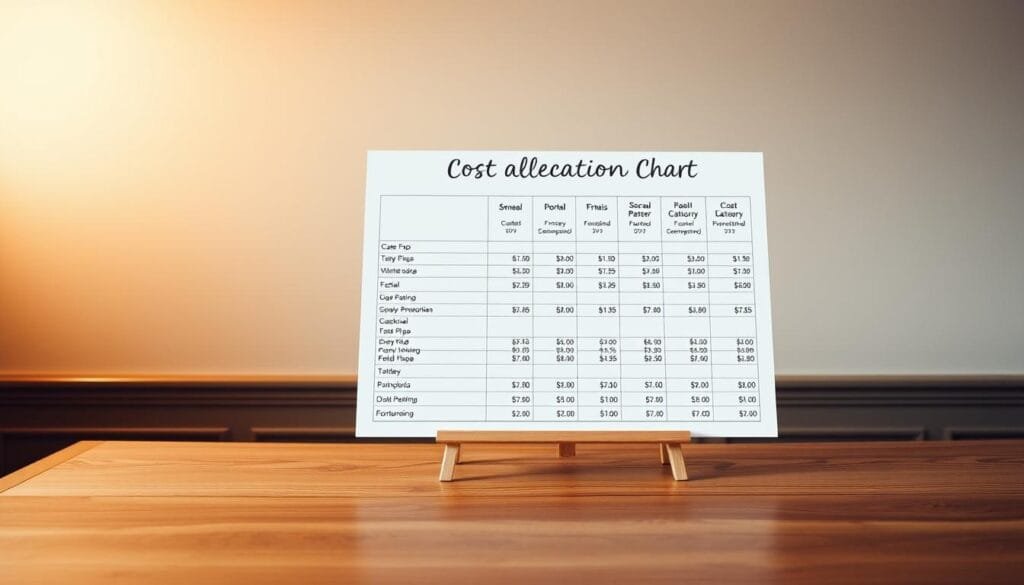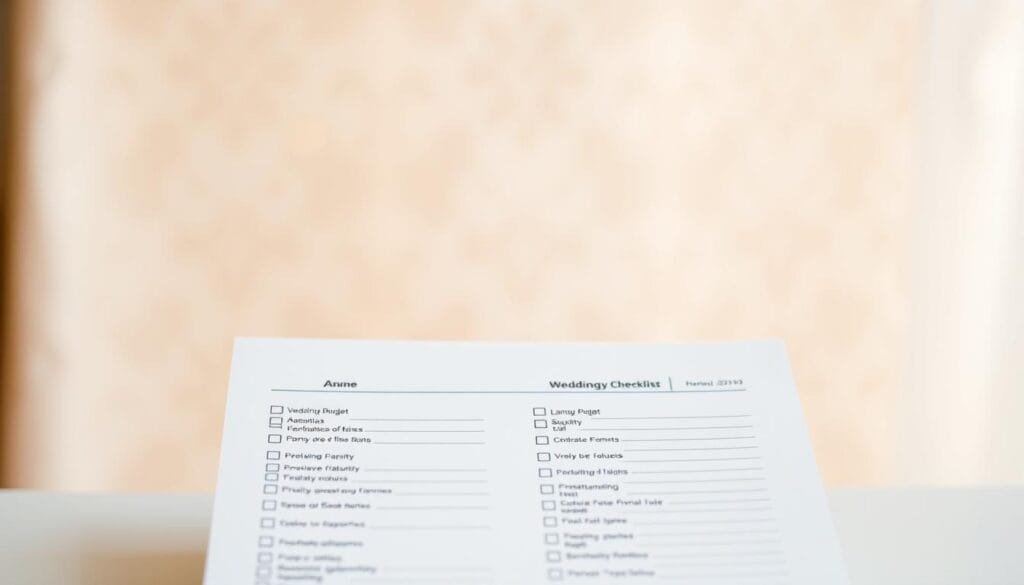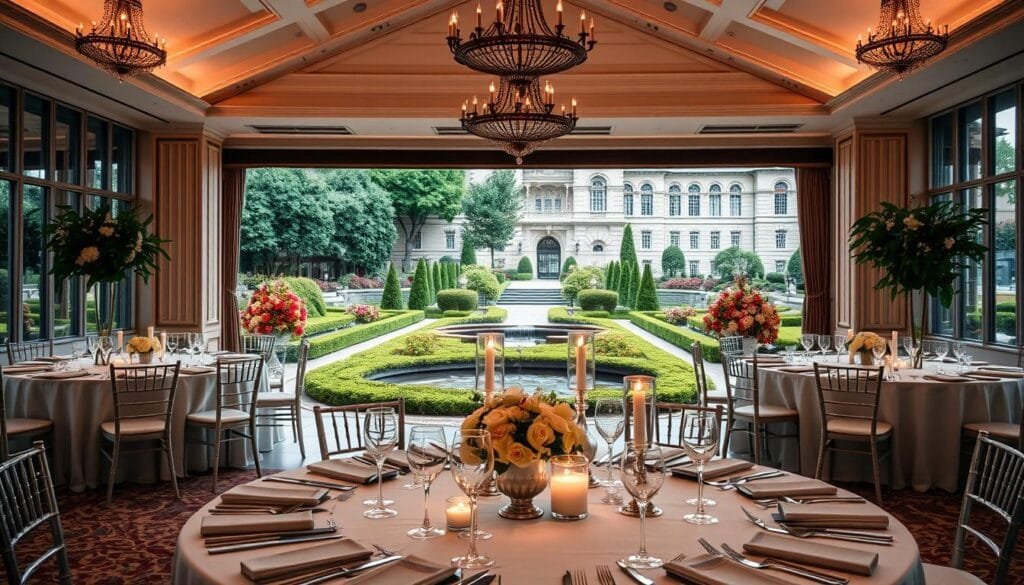Remember scrolling through those glossy wedding blogs, heart racing as you pinned your dream decor and venue ideas? Then reality hit when you saw the price tags. Trust me—I’ve been there too. That mix of excitement and panic? It’s normal. But here’s what I’ve learned: your vision doesn’t have to shrink just because your wedding budget feels tight.
Let’s get real for a second. As of 2024, the average wedding cost in the United States is approximately $33,000 – and while numbers vary everywhere, one thing’s universal: hidden expenses will pop up. Maybe it’s that last-minute seating chart change or unexpected floral fees. But guess what? You can dodge those financial curveballs without losing sleep (or your Pinterest-worthy ideas).
We’re going to tackle this together. I’ll show you how to sort through what truly matters—whether it’s that showstopping cake or a live band that gets everyone dancing—and align your spending with those priorities. You’ll learn how real couples trimmed their costs by 30% while keeping their must-haves intact. Spoiler: it’s not about skipping the champagne toast.
By the end, you’ll have a game plan that feels less like spreadsheets and more like freedom. Because your big day should reflect your story—not a credit card statement.
💍 Get Your FREE Wedding Budget Planner + 15% OFF!
Planning your dream wedding on a budget? Download this gorgeous, easy-to-use planner for FREE, and score 15% off your entire first purchase of unique personalized gifts, decor & more.
👉 Grab your free planner + discount now

Key Takeaways
- Current average celebration expenses hover around $19,000, with flexibility based on priorities
- Unexpected costs often surprise couples—we’ll identify common ones upfront
- Personalizing your spending plan ensures money goes toward what you value most
- Practical cost-cutting strategies exist for every aspect of your vision
- Organization tools prevent financial stress while planning
- Your ideal celebration remains achievable through intentional trade-offs
Achieving Your Dream Wedding Within Budget
Ever notice how everyone’s celebration looks flawless online? Here’s a secret: those picture-perfect events often hide stress-filled spreadsheets. The magic happens when you focus on what truly matters to you two.
Understanding Your Vision and Priorities
Let’s cut through the noise. That cozy backyard dinner with string lights? Just as meaningful as a ballroom gala if it feels authentic. Grab coffee together and ask: “What three moments will make this day unforgettable for us?” Maybe it’s your cousin’s acoustic rendition of your song or serving grandma’s famous pie instead of fondant cake.
Setting Realistic Expectations
Local vendor costs might surprise you—I’ve seen floral quotes range from $800 to $8,000 in the same city. Chat with three suppliers minimum before deciding. One couple swapped peonies for seasonal dahlias, freeing up $2k for their live band. That’s smart planning.
Your financial roadmap should protect future goals too. As one bride told me: “Skipping chair covers meant we kept our house down payment intact.” Now that’s a trade-off worth making.
Expert Wedding Budget Management Strategies
How many times have you heard “just stick to the averages” when planning your big day? Here’s the truth: typical cost breakdowns are helpful guardrails, not rigid rules. Let’s explore how to use them as springboards for your unique vision.

Know the Numbers, Then Make Them Work
Local pricing shocks even seasoned planners. A photographer might charge $1,200 in Nashville but $3,500 in San Francisco. That’s why I always suggest:
- Comparing three quotes minimum per service
- Asking vendors about off-season discounts
- Bundle deals (like cake + florals from the same shop)
One couple I worked with scored 20% off their dream location by booking a Thursday in November. Their secret? Flexibility creates negotiating power.
Style Meets Savings
Your priorities should drive the numbers—not the other way around. Love breathtaking photos but care less about floral arches? Shift funds accordingly. I’ve seen:
- Foodies allocate 50% to catering
- Music lovers prioritize live bands over elaborate centerpieces
- Minimalists skip chair covers to fund premium videography
“Our midnight snack bar cost less than upgraded linens,” shared Maryanne, a recent bride. That’s what intentional spending looks like. Venues and vendors often customize packages when you explain what truly matters to you.
Pro Tip: Make sure you get your free wedding budget planner and 15% OFF, no purchase necessary.
Building Your Detailed Wedding Budget Checklist
What if I told you the secret to stress-free planning fits on one page? Think of your checklist as a financial roadmap that grows with your vision—not against it. Let’s turn “I hope we remembered everything” into “We’ve got this covered.”

Printable Tools for Tangible Progress
There’s power in pen-to-paper planning. I still use printable sheets for client meetings—they make tracking deposits and deadlines feel concrete. One groom told me, “Crossing off ‘venue deposit paid’ gave me the same rush as scoring concert tickets.”
Pro tip: Keep yours in a bright folder you’ll actually grab during vendor calls.
Zero Surprises, Full Control
Break down categories until they’re crystal clear. Attire isn’t just “dress” — it’s alterations ($300 average), steaming fees ($75), and that sparkly belt you’ll definitely add last-minute. Recent clients forgot to budget for breakfast delivery to their getting-ready suite ($200 saved by adding it early).
Your sheet needs four columns:
- Estimated cost (research-based)
- Actual quotes (with dates)
- Paid amounts
- Balance deadlines
Don’t let small items slide. Those “oh right, stamps!” moments add up fast. One couple’s “miscellaneous” column ballooned to $1k before they started line-item tracking. Now they laugh about almost forgetting marriage license fees—but only because their checklist saved them.
Allocating Wedding Expenses – From Venue to Catering
Ever wonder why some celebrations feel effortlessly perfect? It’s not about unlimited funds—it’s about strategic spending where it counts most. Let’s talk about the dynamic duo shaping your financial plan: your venue and menu.

Breaking Down Major Cost Categories
Your guest list acts like a volume knob for expenses. More attendees? You’ll need:
- Larger spaces (ballrooms over cozy bistros)
- Extra chairs and table settings
- Additional meal portions and bar packages
One couple trimmed their list by 20% and upgraded to premium steak dinners without increasing their total food spend. Venues set the tone—a historic library might need minimal decor, while a blank canvas barn lets you create magic (for a price).
Adjusting Percentages to Fit Your Needs
Traditional guidelines suggest 40% for venue and meals. But here’s the truth: your priorities rewrite the rules. Passionate foodies? Bump catering to 50% by choosing digital invites over printed suites. Music lovers might scale back floral arrangements to fund that killer DJ.
Don’t forget hidden fees when comparing quotes. That $35/plate charge? Add 22% for service staff and rentals. Recently, a bride discovered her “all-inclusive” venue required separate linen rentals—a $400 surprise avoided by asking detailed questions upfront.
“We spent less on chairs but more on passed appetizers during cocktail hour,” shared a couple who prioritized mingling over seating. Their secret? Treat percentages as flexible friends, not strict rulers.
Smart Cost-Saving Tips to Enhance Your Wedding Experience
What if your celebration could feel luxurious without the luxury price tag? The secret lies in strategic conversations with your vendors. Timing and flexibility often unlock better deals than you’d expect—I’ve seen couples save $3k just by shifting their date from June to April.

Negotiation Tactics That Actually Work
Vendors frequently adjust pricing for couples willing to collaborate. A recent client saved 15% on floral arrangements by accepting Thursday deliveries instead of weekend rush fees. “We got the same peony bouquets—just two days earlier,” they shared.
Start by asking suppliers: “What could we tweak to fit this service into our spending plan?” You might discover:
- Off-season discounts (November-March bookings)
- Package deals for combining photography + videography
- Lower rates for non-Saturday events
One DJ offered a 10% discount when clients agreed to afternoon setup instead of evening. Payment plans also help—spreading costs over six months eased cash flow for several couples I’ve worked with.
Always compare what’s included. That $2,500 catering quote might cover linens and cleanup, while a $2k competitor charges extra. Smart choices now mean more funds for honeymoon adventures later.
Leveraging Creative and Low-Cost Planning Alternatives
What if your celebration’s backdrop could become its most memorable feature? I once helped a couple transform a public library’s rare books room into a moody, candlelit reception space—for less than half the cost of a standard banquet hall. The secret? Creative solutions often feel more “you” than cookie-cutter options.
DIY Décor and Attire Ideas
Those mason-jar centerpieces everyone pins? Cute, but let’s talk meaningful instead. A recent bride used her grandma’s vintage teacups as floral vases—free and sentimental. For attire, sample sales and consignment shops hide gems: one groom snagged a $3k tuxedo for $700, tags still attached.
Stick to 2-3 DIY projects max. Borrowed string lights or rented linens can slash décor costs without glue-gun burnout. And that dress? Rental services now offer designer looks for 80% off retail—you’ll never miss the alterations bill.
Exploring Non-Traditional Venues and Services
Art galleries needing evening events. Coffee shops with private courtyards. Urban rooftops. These spaces often charge lower fees and let you bring your own caterer—a double win. I’ve seen couples repurpose:
• Museum atrium fees into tax-deductible donations
• Restaurant buyouts that include tables/chairs
• Backyard tents with food trucks instead of plated meals
One couple hosted their ceremony in a butterfly conservatory—guests still rave about the monarchs fluttering during their vows. Unexpected locations create stories, not just photos.
Lastly – if your budget is tighter – check out How to Plan a Wedding Under $10,000 – you’ll find budget-friendly tips and expert advice to make your dream wedding affordable and unforgettable, even under $10,000.
FAQ
How do I balance my dream vision with what I can actually afford?
Start by identifying your non-negotiables—like photography, live bands, or floral arrangements—and allocate funds there first. We’ve seen couples use creative swaps (like digital invites or seasonal blooms) to stretch their dollars without sacrificing style.
What’s the average cost for a venue vs. catering?
Venues typically take 40–50% of the total spend, while food/drink averages 30%. But these numbers aren’t set in stone! A taco truck or family-style dinner can slash catering costs, leaving room for that Instagram-worthy archway you’ve been eyeing.
Can I negotiate prices with vendors?
Absolutely! Many florists, photographers, and DJs offer package deals or off-peak discounts. We’ve had success asking for à la carte options—like nixing extra hors d’oeuvres to upgrade the cake tier.
How detailed should my expense checklist be?
A> Break it down to the last centerpiece. Hidden costs like marriage licenses, alterations, or parking fees add up fast. Use apps like Zola or The Knot to track every dollar in real time—trust us, your future self will thank you.
Are DIY projects really worth the effort?
Depends on your skills and timeline! Hand-painted signage or thrifted vases can save hundreds, but don’t tackle complex tasks like baking your own cake. Focus on 2-3 meaningful DIY elements to keep stress low and personality high.
What’s a sneaky way to cut décor costs?
Borrow instead of buy! Raid friends’ weddings for leftover string lights, linens, or even faux greenery. Swap expensive floral centerpieces for potted plants guests can take home—double duty as favors!
How do non-traditional venues impact the budget?
Parks, backyards, or Airbnb estates often cost less than banquet halls—plus they come with built-in charm. Just factor in rentals (tents, chairs) and permits. We’ve seen couples save 25% by choosing unconventional spaces!








